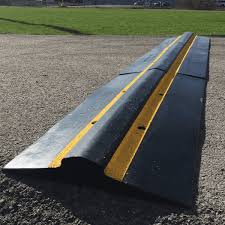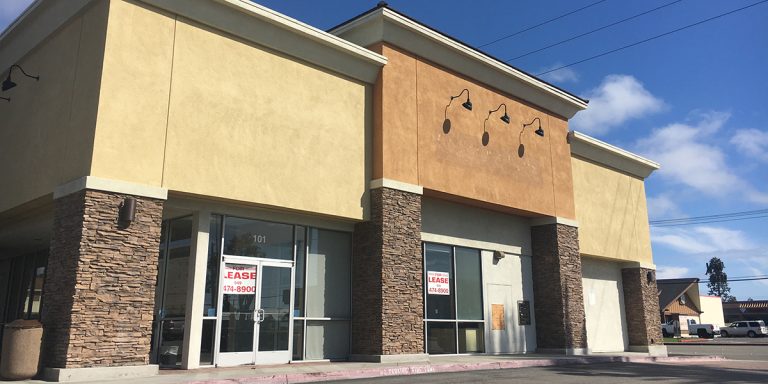Speed Bumps for Driveways: The Benefits of 3-Inch High Models
Speed bumps are a proven method for controlling vehicle speed and ensuring safety on driveways, especially in residential areas. Among the various height options available, 3-inch high speed bumps strike the right balance between effectiveness and convenience. This article will explore the key benefits of using speed bumps for driveway 3 inches high, including their safety advantages, installation considerations, and suitability for different types of residential properties.
What Are 3-Inch High Speed Bumps for Driveways?
Speed bumps are raised barriers installed on roadways or driveways to slow down vehicles and ensure safety. The height of a speed bump is crucial in determining its effectiveness. While higher bumps (4–6 inches) may be more impactful in slowing down vehicles, a 3-inch high speed bump is often sufficient for controlling speed while still maintaining comfort for drivers and minimizing wear on vehicles.
A 3-inch speed bump is designed to reduce vehicle speeds without causing too much discomfort for drivers. It is particularly suitable for residential driveways where moderate speed reduction is needed. These bumps are typically made from durable materials such as rubber, plastic, or asphalt and can be installed quickly and effectively.
Benefits of 3-Inch High Speed Bumps for Driveways
- Effective Speed Control
- The primary benefit of installing a 3-inch high speed bump is its ability to control vehicle speed. By slowing down drivers, it reduces the risk of accidents, particularly in areas with pedestrians, children, or pets. A 3-inch bump is sufficient to discourage speeding without causing excessive jolts or damage to the vehicle.
- Comfortable for Vehicles
- While higher speed bumps can be uncomfortable, a 3-inch speed bump provides a moderate level of speed reduction while minimizing discomfort. This makes it suitable for residential areas where vehicles need to move at lower speeds, but drivers still want a smooth ride. Vehicles won’t experience as much bouncing or scraping as they would with taller bumps.
- Reduced Noise and Wear
- A 3-inch high speed bump reduces the likelihood of excessive noise or damage to vehicles compared to taller bumps. Drivers won’t have to brake or accelerate abruptly, and the vehicle’s suspension system won’t experience undue strain. This also helps extend the life of the vehicle and reduces the need for costly repairs.
- Aesthetically Pleasing
- A 3-inch high speed bump is less obtrusive and blends better with the driveway’s aesthetics. Whether made from rubber, plastic, or asphalt, these bumps are often designed to be low-profile, ensuring they don’t dominate the visual appeal of your driveway while still providing effective traffic control.
- Eco-Friendly Options
- Many 3-inch high speed bumps are made from recycled materials, particularly rubber from tires. This makes them an eco-friendly option for homeowners looking to reduce their environmental impact while also improving the safety and functionality of their driveway.
- Ease of Installation
- 3-inch high speed bumps are relatively easy to install, especially rubber and plastic models. These materials are lightweight and can be placed directly on the driveway surface without the need for extensive modifications. Rubber speed bumps, in particular, can be bolted or glued into place, making installation straightforward.
Ideal Situations for Installing 3-Inch High Speed Bumps
A 3-inch high speed bump is versatile and can be used in various residential situations. Some ideal locations and scenarios for installing a 3-inch speed bump include:
- Residential Driveways with Heavy Traffic
- If your driveway serves as a common entry point for multiple vehicles, installing a 3-inch high speed bump can help slow down traffic and ensure the safety of children, pedestrians, and pets. This moderate height is ideal for slowing down vehicles without overly inconveniencing drivers.
- Near Pedestrian Pathways or Walkways
- For driveways where people frequently walk, such as in gated communities or areas with high foot traffic, a 3-inch speed bump can help keep pedestrians safe by forcing drivers to reduce their speed when approaching crosswalks or pathways.
- Driveways with Limited Visibility
- In situations where visibility is limited, such as at blind corners or where a driveway connects to a busy street, a 3-inch speed bump can force drivers to slow down as they approach the intersection, improving reaction time and reducing the risk of accidents.
- Gated Communities and Shared Driveways
- In shared residential spaces or gated communities, a 3-inch high speed bump can help regulate traffic speed and reduce the chances of drivers speeding through the property. It creates a safer environment for all residents while maintaining a smooth driving experience.
Materials for 3-Inch High Speed Bumps
Speed bumps can be made from a variety of materials, each offering its own advantages. Here are the most common materials used for 3-inch high speed bumps:
- Rubber Speed Bumps
- Rubber is a popular material for speed bumps due to its durability, flexibility, and ease of installation. Rubber speed bumps are often made from recycled rubber, making them an eco-friendly choice. They are also highly visible, with reflective markings that increase safety during nighttime driving.
- Plastic Speed Bumps
- Plastic speed bumps are lightweight and modular, making them easy to install and adjust as necessary. They are typically designed to be resistant to weather elements such as UV rays, rain, and snow. Plastic bumps can be brightly colored and are often equipped with reflective tape for better visibility.
- Asphalt Speed Bumps
- Asphalt speed bumps are a more permanent solution. While the 3-inch height is ideal for residential driveways, asphalt bumps are more commonly used for larger parking areas or commercial properties. They are long-lasting and blend seamlessly with the driveway’s surface but require professional installation.
- Concrete Speed Bumps
- Concrete speed bumps are similar to asphalt bumps in terms of durability and permanence. Though more expensive and time-consuming to install, concrete bumps can provide a long-term solution for traffic management on a driveway.
Installation of 3-Inch High Speed Bumps
The installation process for 3-inch high speed bumps will vary depending on the material chosen. Here are the general steps involved for different materials:
- Rubber and Plastic Speed Bumps
- Preparation: Clean the area of any debris or dirt where the speed bump will be placed.
- Placement: Position the speed bump along the desired location of the driveway.
- Securing: Rubber and plastic speed bumps can be bolted, screwed, or glued into place. Some models come with pre-drilled holes for easy attachment, while others feature adhesive strips for simple installation.
- Asphalt and Concrete Speed Bumps
- Excavation: The installation of asphalt or concrete speed bumps requires digging a small trench where the bump will be located.
- Molding: A mold is then placed in the trench to shape the bump.
- Pouring: Asphalt or concrete is poured into the mold and left to set.
- Curing: Once set, the bump is smoothed and cured to ensure it is secure and ready for use.
Cost of 3-Inch High Speed Bumps
The cost of installing a 3-inch high speed bump will depend on several factors, including the material used, the size of the bump, and the installation method. Here’s an overview of general pricing:
- Rubber speed bumps: Typically priced between $50 and $150 for a standard 3-inch model.
- Plastic speed bumps: Generally range from $30 to $100.
- Asphalt or concrete speed bumps: These can be more expensive, with costs ranging from $200 to $500 or more depending on the size and installation requirements.
Conclusion
3-inch high speed bumps are an excellent solution for controlling vehicle speed on driveways, especially in residential areas. They offer the perfect balance between slowing down traffic and maintaining a comfortable driving experience. With various materials and installation methods available, homeowners can choose the most suitable option to meet their needs. Whether you’re looking to enhance safety for pedestrians, preserve the integrity of your driveway, or simply control traffic, a 3-inch high speed bump can be an effective and affordable solution.






